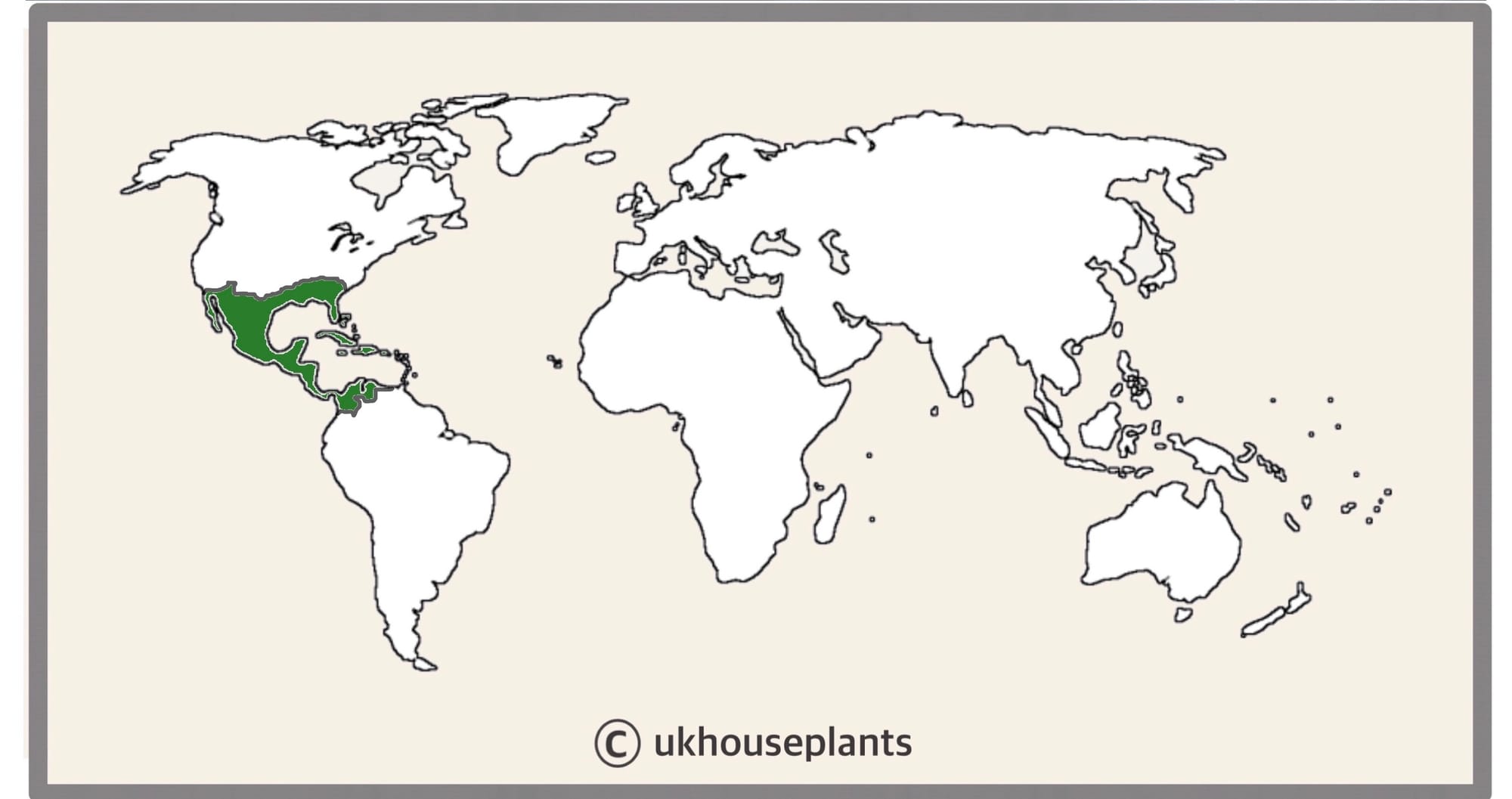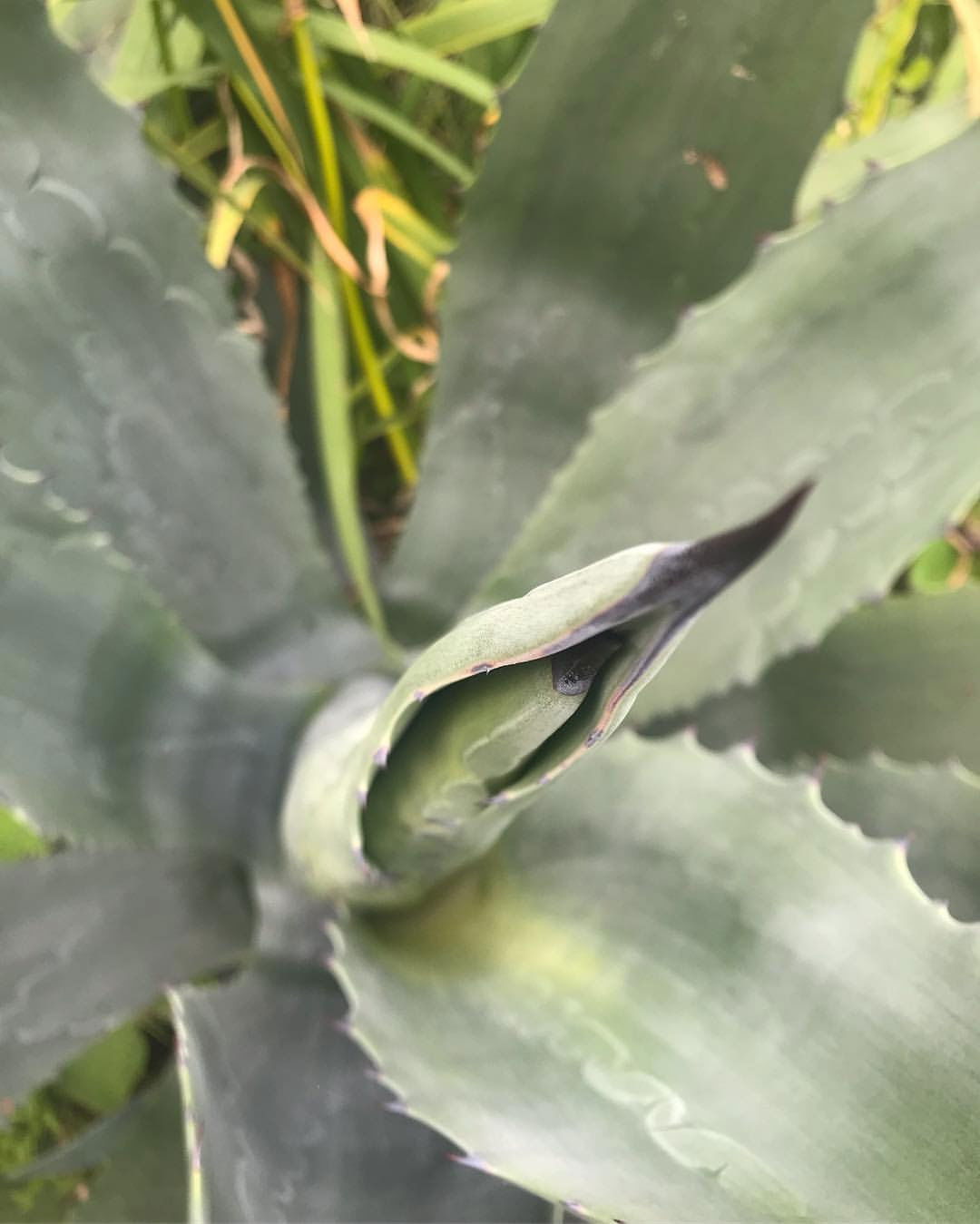
Agave americana (Century Plant)
Contents
- Top Tips
- Location, Water, Humidity & Fertilisation
- Common Issues
- Origins, Temperature, Propagation, Repotting & Toxicity.
Need the answer to a specific plant query? Book a 1-to-1 video call with Joe Bagley, the website's friendly author to overcome and address your niggling problem! Available on iMessage, WhatsApp, Facebook Messenger & more.
Top Tips & Info
- Care Difficulty - Easy
- A few hours of morning or evening sun is mandatory for Agaves, especially in the winter months. If you decide to bring it outdoors for the spring/summer, offer a sheltered location until the plant is accustomed to the sunlight, for the prevention of sun-scorch. Retrieve back indoors once the nighttime temperatures dip to 5°C (40°F) if you're wanting to keep it as a houseplant.
- Agaves prefer a sunny windowsill when kept indoor.
- This plant must endure periods of droughts in between waters - if you're stuck with when to water it, think of the ukhouseplants' phrase of 'Drenches Between Droughts'.
- Be careful when watering - allowing excess moisture to sit in the cubbyholes of the stem will result in diseases like southern blight and 'heart rot'.
- Fertilise every two months using either a 'Cactus' or 'Houseplant' labelled feed, all year round.
- Keep an eye out for Mealybugs that'll form white cottony webs in the cubbyholes.
- Repot two to three years or two during the spring, using a 'Cactus & Succulent' potting mix. This is the perfect time to propagate the small offshoots that'll form at the base of the crown. Scroll down to 'Propagation' & 'Repotting' to learn more.
Location & Light - 🔸🔸🔸🔸
Agaves are the ideal statement plant for a patio during the warmer months of the year. If it's situated indoors, a brightly lit spot accompanied by morning or evening sun is crucial for its health and turgidity. During the colder months, (below 8°C / 46°F at night), bring the plant back indoors and place in a brightly lit location with some direct sun. If the Agave is situated in a darker location, the soil must thoroughly dry out in between irrigations to combat root rot, but these locations should generally be avoided for the prevention of over-watering related diseases.
A conservatory or south-facing room is best for good quality growth. Never locate an Agave within three metres of an operating heat source, for example, a fireplace or radiator as irreversible damage may occur. For newly propagated pups, be sure to avoid sun scorch and droughts.
Water - 🔸
The ukhouseplants' rule of 'droughts between drenches' strongly applies to all Agaves. In the spring and summer, allow all of the soil to dry out in between waters for at least a week. During the cooler months, reduce this further to replicate its dormancy period. This genus is an excellent choice for those who are avid under-waterers, due to their ability to survive weeks on end without hydration. Under-watering symptoms are usually uncommon; however, crispy and stunted growth are possibly due to either forgetfulness or too much sunlight. Over-watering symptoms include root and stem rot, mushy yellow leaves and a rotten stem. These issues can be corrected by removing the plant out from its pot and inspecting the rootball or soil. Are the roots brown and mushy? If so, remove the affected roots and replace the soil with a well-draining potting mix (Cactus & Succulent Compost is best). Agaves are more likely to suffer from over-watering if they're situated in a dark location or in overly-moist soil.
Humidity -
This is not a factor; however, if your Agave is situated indoors, a quick hose down from time to time will reduce the dust covering its leaves.
Fertilisation - 🔸
Feed every two months all year round using either a 'Cactus' or 'Houseplant' labelled fertiliser. Do not directly apply 'ready to pour' feeds into the soil without a pre-wash, as this will lead to burning roots and yellowed leaves.
Common Issues with Agaves
Over-watering is the most common issue, with typical signs including a softened yellow stem and stunted growth. There must be periods of droughts to replicate the habitats of the American deserts, as well as limiting the chance of diseases. Avoid waterlogging as there's no point fulfilling the phrase 'drenches between droughts' if the base of the pot is submerged. For more information about over-watering related issues, be sure to click on this link.
A pale centre and deformed growth are typical signs of too little light. Offer at least an hour of direct sunlight, especially in the winter months, to provide the vital nutrients that'll be converted into plant sugars.
A deformed pot is the product of its strong rhizomatous roots travelling through the soil and therefore shouldn't cause concern.
Scorched or browned edges are the result of too little water and over-exposure to the sun. Although Agaves are a superb choice for plants in sunny locations, those that haven't acclimatised to the harsh rays will show signs of sun-scorch and environmental shock. Prolonged exposure will significantly speed the process of dehydration, so consider transplantation into a bigger pot (in the spring) to wrap the roots around moister soil.
Over-supplementing an Agave will bring nothing but grief in the likes of yellowing leaves and weak, dramatic growth. Although a six-weekly feed is an excellent way to promote good health, dry soil and fertiliser salts will quickly lead to the burning of roots. The advice for this issue is to pre-moisten the soil beforehand and reduce the frequency of fertilisations somewhat.
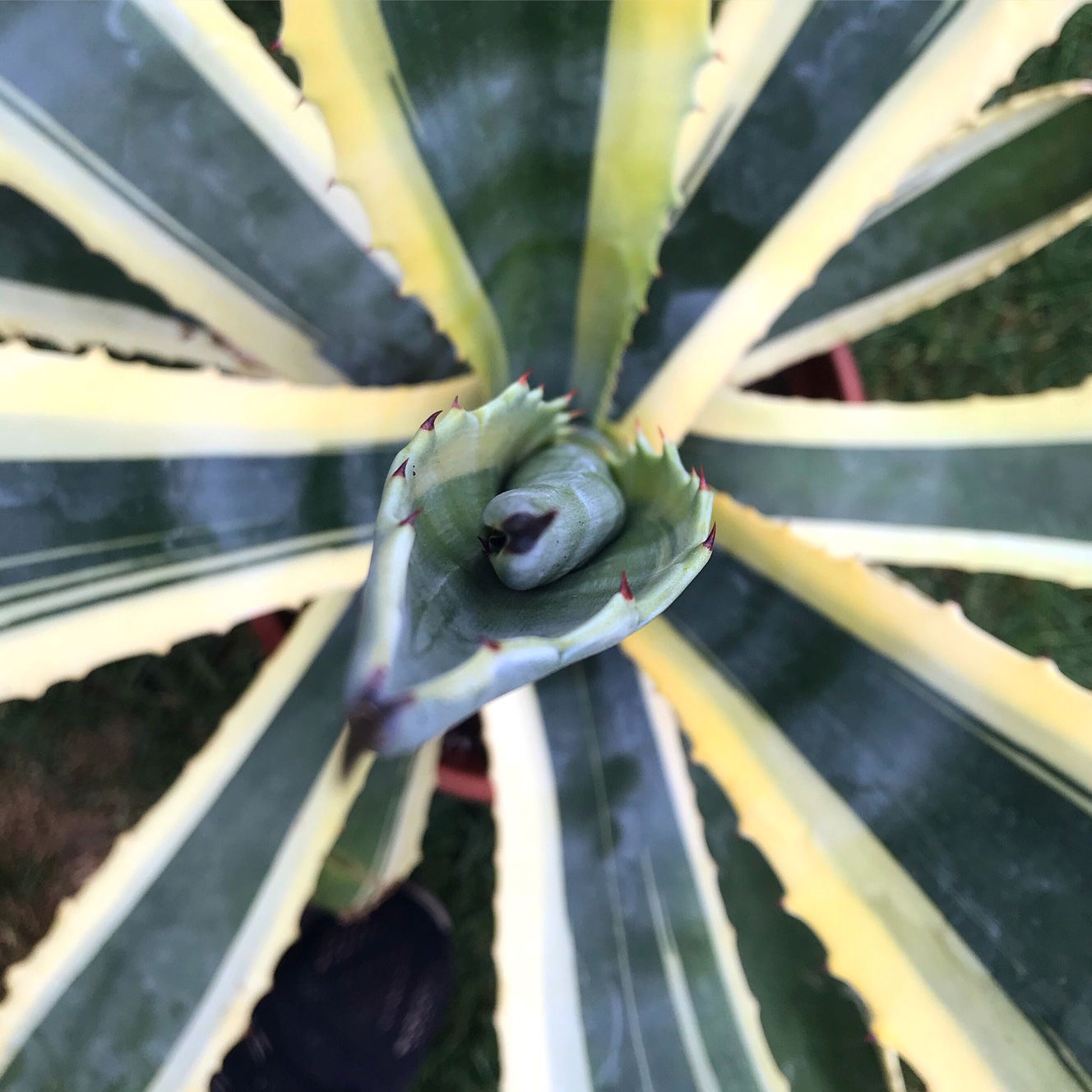 Agave americana 'Marginata'
Agave americana 'Marginata'
Origins
Agave consists of over 614 species, originating from semi-desert locations in Mexico, Central America and northwestern South America. The genus was first described back in 1753 by Carl Linnaeus during a trip to the Americas. The name, Agave, can be translated from Greek meaning 'admirable', due to its towering flower stalks produced in late spring. Over the millennia, A. tequiliana has been used to make tequila, whereas the A. americana is farmed for its sour-yeast tasting beverage, 'Pulque'.
Temperature
-3° - 25°C (27° - 77°F)
H2 (Hardiness Zone 10) - Tolerant of temperatures above freezing. This plant will die if left in temperatures below frosts; move to a conservatory or greenhouse until this risk has elapsed.
Spread
Most species will reach heights of 1m in height and 1m in width when grown indoors. Growth will be slowed once it becomes potbound, so if you want a smaller specimen, only repot biannually. Ultimate height will be reached within 8 - 10 years.
Pruning & Maintenance
Remove yellowed or dying leaves and plant debris to encourage better growth and improve the all-round appearance. Pruning must be done with clean scissors or shears to reduce the chance of bacterial and fungal diseases; remember to make clean incisions as too much damage can shock the plant. The best way to reduce the overall size of this plant is by propagating the basal offsets in separate pots - see the section below.
Propagation
Via Seed or Offset Division.
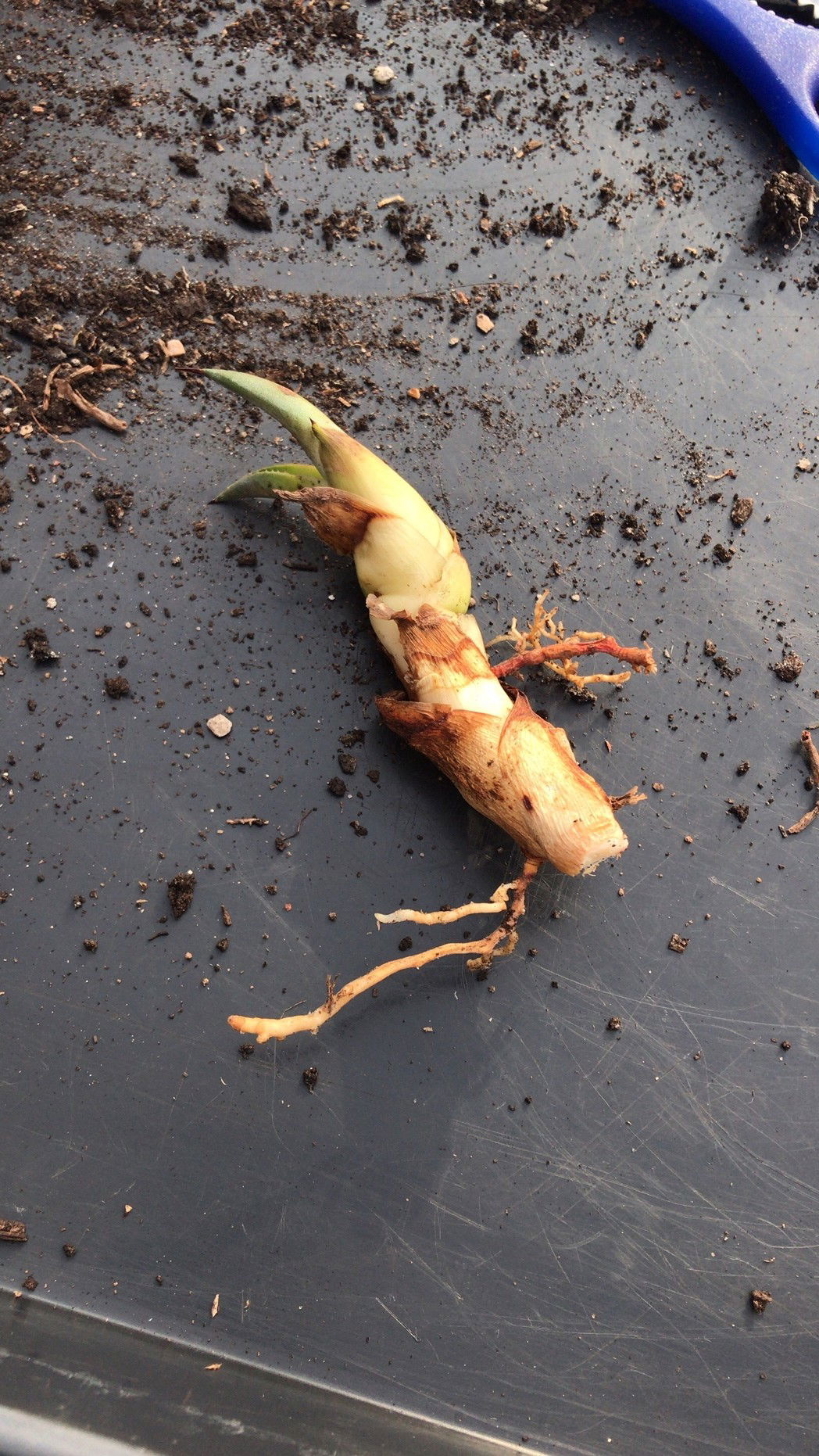 A good example of a 'pup' (basal offset) has a small root system and adequate leaves.
A good example of a 'pup' (basal offset) has a small root system and adequate leaves.
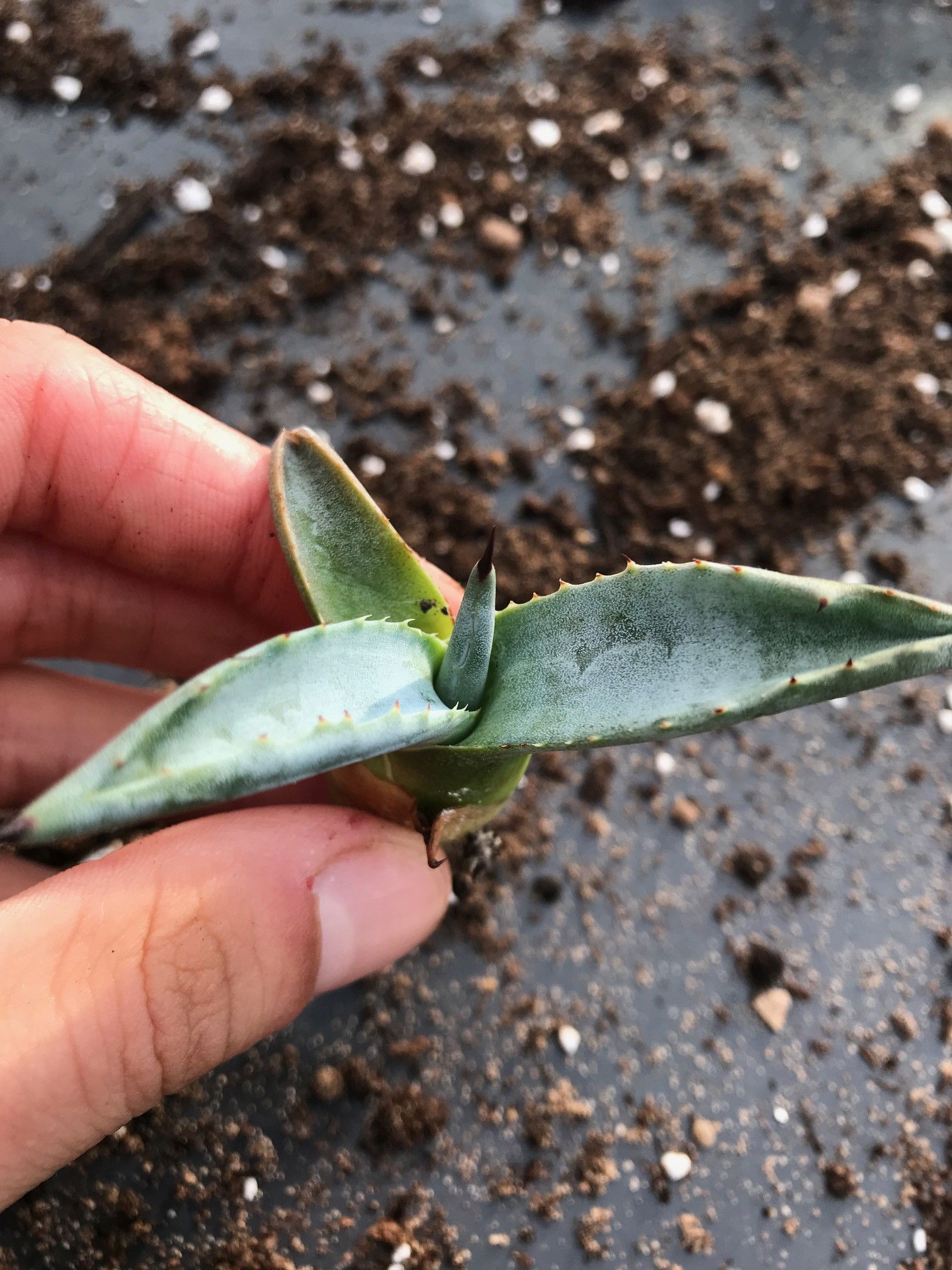 Another Agave Pup.
Another Agave Pup.
Offset (Pup) Division - For this method, it's best to divide in spring or early summer and once the offshoots are at least a quarter of the mother plant's size. Remove its pot and place your hand in between the junction that connects the two; soil may have to be brushed away to get a better grip. Gently push the pup downwards while supporting the mother plant until you hear a snap. Cautiously separate the root systems, keeping great care in keeping them damage-free; remember, the more roots it has, the quicker the regrowth will be. Place the new plantlet in a 7cm pot with 'Cactus & Succulent' potting mix, ensuring all of the leaves are still above the soil line. Provide a similar location to what the plant is used to, or an equally bright windowsill with temperatures around 18°C (64°F) with the majority of the soil drying out in between waters. New leaves should emerge within the six weeks, as long as the soil is kept on the drier to life. Follow the care tips provided above.
Flowers
Huge tubular stalks will develop during late spring, with the blooming process lasting several weeks. The (at least) two-metre spike will produce clusters of yellow, pink, red or white flowers along the shaft, forming a tree-like structure. If pollinated successfully, the seeds can take several months to develop and can be propagated in the following spring. Agaves are monocarpic, meaning that they'll only flower once in their lifetime before dying shortly afterwards. Specimens grown indoors are very unlikely to flower.
Repotting
Repot every two to three years in spring using a 'Cactus & Succulent' labelled potting mix and the next sized pot with adequate drainage. Agaves are a 'family plant' and therefore the mother plant can happily grow with its pups for many years, even if this means over-filling the pot. They prefer to be potbound as this will downplay the risk of over-watering (& root rot), so only repot if necessary or if you're propagating the offsets (pups).
If you were to repot your Agave, hydrate the soil 24hrs before tinkering with the roots to prevent the risk of transplant shock. Use a 'Cactus & Succulent' labelled potting mix and the next sized pot, unless the rootball is significantly reduced due to the propagation of pups. We recommend using a terracotta pot as this will help with drainage and moisture absorption.
Book a 1-to-1 video call with Joe Bagley if you'd like a personal guide to repotting your houseplant. This will include recommending the right branded-compost and pot size, followed by a live video call whilst you transplant the specimen for step-by-step guidance and answer any further questions!
Pests & Diseases
Keep an eye out for mealybugs, scale, thrips, fungus gnats, whitefly, vine weevils & root mealybugs that'll locate themselves in the cubbyholes and undersides of the leaves, with the exception of the latter two in the soil. Common diseases associated with Agaves are root rot, leaf-spot disease, rust, powdery mildew & southern blight - click here to learn more about these issues.
Toxicity
Not known to be poisonous by the consumption of pets and humans. If high quantities are eaten, it may result in vomiting, nausea and a loss of appetite.
Retail Locations
Online Stores.
Book a 1-to-1 Call with Joe Bagley
If you need further advice with your houseplants, book an advice call with ukhouseplants' friendly and expert writer today! This can be done via a video or audio call on most apps, including Facebook, FaceTime & Skype. A ten-minute call costs £5.99 (US$7), or £15.99 for thirty minutes. You can ask multiple questions, including queries on plants, pests, terrariums, repotting advice and anything in between. Please consider supporting this service to keep ukhouseplants thriving!
